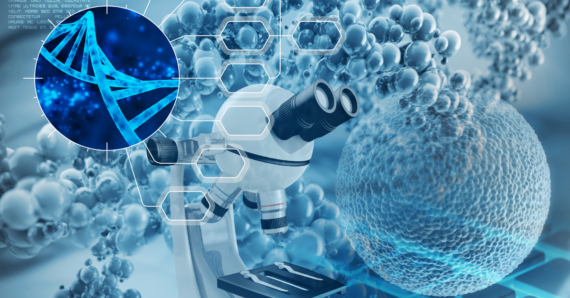Mesenchymal stem cells (MSCs) have become a focal point in cancer research, not just for their potential to differentiate into diverse cell types but also for their intriguing immunomodulatory capabilities. Derived from various tissue sources such as bone marrow, umbilical cord blood, and adipose tissue, human mesenchymal stem cells (hMSCs) hold promise for innovative cancer therapies.
The Expansion Challenge: Efficient and Safe Methods
However, the generation of adequate cell numbers for MSC-based therapies faces significant hurdles:
(i) the low abundance of MSCs in tissues of origin necessitates substantial ex vivo cell expansion;
(ii) donor-specific characteristics, including MSC frequency and quality, decline with disease progression and age; and
(iii) cellular senescence, promoted by extensive expansion, results in diminished therapeutic functionality.
Given these constraints to using hMSCs for clinical applications, there is an urgent need to expand these cells ex vivo. This endeavour not only demands effective and safe expansion methods but also requires a strategy that preserves the essential properties of the cells. Accelerating this expansion process is crucial to circumvent challenges such as cellular aging and potential contaminations, which could compromise the therapeutic potential of these cells.
The success of hMSCs expansion for cancer-related applications hinges largely on the choice of cell culture media. The media’s composition must strike a delicate balance, providing optimal nutrients and growth factors that facilitate rapid proliferation while preserving the cells’ inherent characteristics.
FBS: A Common Serum Additive with Multifaceted Benefits
Foetal Bovine Serum (FBS) has cemented its position as the go-to serum additive for in vitro cell culture across a diverse range of cells, including MSCs. It is typically added to a basal media such as s Dulbecco’s modified Eagle’s medium (DMEM), α-modified minimum essential medium (α-MEM), or DMEM/F12 media. FBS’s popularity stems from several advantageous properties:
Rich Nutrient Profile:
FBS is replete with adhesion molecules, growth factors, micronutrients, and hormones. These components collectively create a nourishing environment, fostering the attachment, growth, and proliferation of mammalian cells, including hMSCs.
Cost-Effectiveness:
From an economic standpoint, FBS offers a cost-effective solution for cell culture, providing robust growth-promoting factors at a relatively lower price point.
Limitations and Concerns: The Downside of FBS
While FBS offers numerous benefits, it’s not without its drawbacks. Several concerns have prompted researchers and regulatory bodies to reconsider its widespread use:
Lot-to-Lot Variability:
One of the significant challenges associated with FBS is its inherent variability between batches. It is an ill-defined supplement, with high inconsistency in terms of the quality and quantity of bioactive compounds. This inconsistency can introduce unpredictability into cell culture experiments, potentially skewing results and complicating reproducibility.
Safety Concerns:
Perhaps more critically, FBS’s xenogenic nature poses safety risks, including potential immunogenicity and concerns related to prion/zoonotic transmission. These safety implications have heightened regulatory scrutiny and prompted a search for alternative, safer supplements for hMSCs culture.
Human Blood Derivatives
Due to the aforementioned concerns, there is a strong trend towards the use of autologous or allogeneic human blood-derived materials, including human serum (hS), human umbilical cord blood serum (hUCBS), and human platelet lysate (hPL).
Human Serum (hS)
Human serum (HS) has been suggested as an alternative to FBS. HS contains abundant bioactive compounds and growth factors that can enhance hMSCs proliferation without altering its characteristics and functional properties.
Human Umbilical Cord Blood Serum (hUCBS)
Human umbilical cord blood serum (hUCBS) can be easily obtained following normal delivery, thus normally screened for the most common bacterial or viral contamination, and its use does not raise any ethical issues. It contains high levels of soluble growth factors and more than 60 proteins, namely, albumin, transferrin, and fibronectin in high concentrations, with different roles in cell growth and stem cell differentiation. In general, UCBS can be considered advantageous as a cell culture supplement considering the easy availability of this allogeneic source, the easy and inexpensive isolation procedure, and the near absence of contaminants.
Human Platelet Lysate (hPL)
Human Platelet Lysate (hPL) can be easily prepared from blood using different procedures. Releasing the growth factors from the platelets represents the key point in hPL production. hPL has a higher concentration of growth factors, such as epidermal growth factor (EGF), hepatic growth factor (HGF), platelet-derived growth factors (PDGF), basic fibroblast growth factor (bFGF), transforming growth factor beta (TGF-ß1), and vascular endothelial growth factor (VEGF), than HS and FBS. This may be the reason why the majority of reports agree that hPL supports cell expansion to a higher degree, compared to FBS and HS.
To address the limitations associated with the use of poorly defined serum or human-sourced supplements in cell culture, there has been a shift towards adopting more precisely formulated chemically defined (CD) media. These media are characterized by well-defined chemical components, including small molecules, salts, fatty acids, and may also incorporate recombinant proteins that are not made in animals.
While CD media offer advantages, they often lack the essential adhesion molecules required for anchorage-dependent MSCs. Consequently, many existing CD media options require pre-coating culture substrates with Extracellular Matrix (ECM) proteins, such as collagens, fibronectin, vitronectin, or laminin, to facilitate cell attachment. This pre-coating ensures hMSC attachment and growth, akin to serum-containing cultures, and preserves MSC multipotency. However, these ECM proteins, typically of human or animal origin, introduce concerns related to batch-to-batch variability, insufficient information about protein content, potential immunogenicity, and involve time-consuming coating procedures.
It’s crucial to note that CD media may not consistently yield optimal cell growth compared to media supplemented with serum or other animal-derived supplements. This underscores the ongoing importance of research and optimisation efforts in refining CD media formulations to achieve more robust and consistent outcomes in cell culture.
Xeno-free, Serum-free, Animal-free Serum?
Various formulations of MSC media, including xeno-free, animal-free, and serum-free options, are available in the market. However, these terms are often subject to confusion and inconsistencies in interpretation.
Xeno-free is typically recognised as a formulation free from non-human animal components, yet it may still incorporate human-derived elements such as human serum, holo-transferrin, or insulin. In contrast, animal-free media excludes any components directly derived from animals, including humans. Serum-free generally indicates a medium without serum or plasma, though it might still contain other biological materials like platelet lysates, growth factors, or albumin.
In conclusion, the wealth of existing data underscores the superiority of human-derived supplements over FBS in not only addressing common disadvantages but also surpassing them in terms of MSC expansion efficiency. Grasping the intricacies of these media and supplement options is vital for researchers when navigating the landscape of optimising formulations. Clear insights into when to deploy specific cocktails significantly enhance the effectiveness and relevance of your research endeavours.
Atlantis Bioscience’s Choice:
Our STEMGOLD MSC High-Performance Medium stands out as the best-in-class MSC medium, offering superior and high-performance capabilities for the expansion of hMSCs across multiple lineages. This cutting-edge medium maintains the trilineage differentiation potential of hMSCs and adheres to the ISCT criteria.
What sets it apart is its GMP-compliant manufactured formulations that minimise lot-to-lot variation and enhance experimental reproducibility. Notably, STEMGOLD MSC eliminates the need for pre-coating, streamlining the expansion process for hMSCs. With its exceptional features, this medium represents a significant advancement in cell culture technology, providing researchers with a reliable and efficient solution for their stem cell studies.
References:
Cimino M, Gonçalves RM, Barrias CC, Martins MCL. Xeno-Free Strategies for Safe Human Mesenchymal Stem/Stromal Cell Expansion: Supplements and Coatings. Stem Cells Int. 2017;2017:6597815. doi: 10.1155/2017/6597815.
Guiotto M, Raffoul W, Hart AM, Riehle MO, di Summa PG. Human platelet lysate to substitute fetal bovine serum in hMSC expansion for translational applications: a systematic review. J Transl Med. 2020 Sep 15;18(1):351. doi: 10.1186/s12967-020-02489-4.
Mushahary D, Spittler A, Kasper C, Weber V, Charwat V. Isolation, cultivation, and characterization of human mesenchymal stem cells. Cytometry A. 2018;93(1):19-31. doi:10.1002/cyto.a.23242








